TOPIC III:Evidence for Pre-Lydian Coin and Currency(Revised July 15, 2004 )
ADDITION (11/23/97): The evidence summarized below is derived mainly from New Kingdom sources. I have not yet found strong evidence of specialized nonroyal merchants for earlier periods. There is, however, evidence of noninstitutional commercial activity. There are marketplace scenes on Old Kingdom tombs, one of which shows traders selling cloth (ESoA, p. 162). That an individual might own a cargo-boat is suggested by the inscription of Qedes of Gebelein dating from the late third millennium (First Intermediate Period) (ESoA, p. 57). In a text dating to early in Dynasty Twelve, Hekanakht refers in routine terms to renting, buying and selling land, cloth, oil and whatever (ESoA, pp. 173-74). Hekanakht, obviously acting as an individual, may or may not have operated on a large scale, but the demonstrated existence of a market leaves open the possibility that others did. In an ane list message (11/22/97), Lorton takes note of The Eloquent Peasant*: The story is set in the First Intermediate Period, though it could be debated whether this or the Middle Kingdom is the actual date of its composition. Also … this is a work of literature. Thus, it is uncertain whether the tales protagonist, an itinerant merchant, is the product of verisimilitude or the desire of the writer to add an outrageous detail.*For a translation ofThe Eloquent Peasant, see Miriam Lichtheim (1973), Ancient Egyptian Literature, Vol. I: The Old and Middle Kingdoms, University of California Press, pp. 169-84.********
2. The principal/agent connection seems clear in an exorcism text: The exorcism (which is recited) is the exorcism of (the god) Marduk, the priest is the image [tsalmu] of Marduk (Clines citing Thompson)
1. In the cycle of stories about the Kings of Akkad, we find one (in an Akkadian tablet from Amarna and in Hittite fragments), called King of Battle, in which merchants who are obviously independent, petition Sargon (2334-2279), the founder of the Dynasty, offering to pay his expenses to open the trade routes to the north and northwest.
3. Papyrus Lansing (4.10) continues with the observation that the ships crews of every house (per) they take up their freights. They depart for Syria. It is well known that, for good reason, the terms family, house, and firm overlapped in antiquity (ESoA, Chap. 2.D). Obviously, then, there were nonroyal trading houses operating in Egypt, Perhaps, the reference includes trading enterprises under the auspices of temples, but there is no reason to exclude independent firms. Another text (Pap. Bibl. Nat. 211.18) locates a merchant in the house of the scribe of contracts Mery (Janssen). Sike, chantress of (the god) Thoth, instructs her correspondent to go to the merchant (shewty) and have his oath annulled (Caminos, p.26). The point of Sikes letter is obscure but the merchant has no named institutional connection.
Review of David M. Schaps,The Invention of Coinage and the Monetization of Ancient Greece(2004) [Published byEH.NET(2004)] and Postscript (added May 17, 2004; revised September 3, 2004)
Altenmller suggests, citing Yoyotte, that thesementeyews are officials because they are structured into ranks. Even if true, this would hardly be a decisive consideration. (The undoubtedly independent Assyrian merchants in Anatolia were structured into ranks.) In fact, as Yoyotte notes, a strong connection with Old Kingdom rulers is demonstrated by such titles as director, controller, chief, inspector ofsementeyews. (Sementeyewalso serve as interpreters and vessel captains.) Indeed, in the later Old Kingdom, a captain led an expedition of quarrymen andsementeyewon behalf of a rulers pyramid complex. A royal connection is clearly demonstrated by a New Kingdom tomb inscription from the time of Hatshepsut designating an official assementeyewof the king(Yoyotte). On the other hand, the attribution of the king is redundant ifsementeyews were exclusively royal officials or agents. Further, Amens oracle to Hatshepsut (cited above) gives the impression that thesementeyews were outside royal purview. A final straw in the wind hinting and independent role is provided by the dedication of Sesostris I (1971-1926) to the Tod temple. Sesostris groups the marvelous contributions of thesementeyews with those of foreign peoples (Yoyotte). Certainly the foreign peoples are not agents or employees of the Egyptian king!
Laconian cup dated to about 550 BCE. Arcesilas, king of Cyrene, receives an accounting of his goods.
Merchants in booths trade with Syrians at the river bank. Scene from New Kingdom tomb of Kenamun, mayor of Thebes.
6. Evidence of commercial activity is sparse in Babylonia after the Old Babylonian period and becomes more plentiful again in the later second millennium. Large nonroyal commercial houses flourished from the seventh to the fourth century BCE. The House of Egibi, for example, bought and sold houses, fields, and slaves, took part in domestic and international trade, and participated in a variety of banking activities.
The Bible records the joint trading expedition of Solomon and Hiram the king of Tyre to Ophir for gold, sandal-wood, and precious stones (1 Kings 9.26-28; 10.1) and the purchase of horses by the kings merchants (sochare ha-melek) from the men of Kevah (1 Kings 10.28). But the Bible also provides evidence of nonroyal merchants in Solomons time (tenth century). 1 Kings 10.15 takes note, in Grays translation, of that portion of Solomons gold originating in the taxes (tolls) (`onshe) on the merchants (tarim) and the traffic (missahar) of the traders (roklim) of all the kings of the arabs and the governors of the land. This translation requires a number of emendations of the Massoretic text, most importantly`onsheforanshemen. (Dahood identifiesanshewith Ugariticunttax, dues.) Although the historical value of the text may well be disputed, it does seem possible, assuminganshe/`onshe= tax, toll, that Israel had two classes of merchants:roklim(andsochare ha-melek), who served kings, and tax-payingtarim(andsochare?), who were basically independent merchants.
1. In the early fifteenth century the god Amen delivered an oracle to the ruler Hatshepsut concerning the status of the incense trade. According to the oracle Hatshepsut would be the first ruler whose forces would tread on the incense terraces. Previously onlysementeyew] had penetrated the Gods Land and carried incense back to Egypt. Evidently thesementyewman with a sack was not a royal trader. Perhaps he was not a large scale trader, but we do not know this.
4. That an individual might own a cargo vessel is hinted in the late third millennium by the inscription of Qedes of Gebelein and proven by the Edict of Horemheb dating from the second half of the fourteenth century. Papyrus Leiden 344 (The Admonitions of Ipuwer) in pursuing its theme of reversal of fortune attests to the private ownership of ships : Behold, he who never built for himself a boat is (now) the possessor of ships, he who possessed the same looks at them, (but) they are not his (Shupak). There are also Ramessid texts in which individuals pay for the use of cargo ships. Papyrus Anastasi IV demonstrates that even a sea-going vessel was not beyond the means of a rich man. A rich man is representedas using his ship to bring goods from Syria to Egypt. Castle notes thatwhile the document is a panegyric rather than an administrative document, it may be argued that the scribe is obliged to paint his complimentary picture within the limits of what was socially possible. No office is attributed to him [the wealthy individual], although this might be expected in a panegyric if he were understood to hold some official position.
TOPIC V: The Argonaut Epos and Bronze Age Economic History(Revised May 10, 2004)
5. A text from Ugarit records the transfer of oil to Abrm of Egypt. The account of Wenamun provides strong hints that Syrian trading houses were operating in Egypt in the later eleventh century.
Was trading, at least larger scale trading, a virtual royal monopoly? There is evidence suggesting otherwise.
Review of Walter Scheidel and Sitta von Reden (editors),The Ancient Economy(2002) [Published byEH.NET(2003)]
Heltzer has gone beyond this relatively clear evidence of nonroyal business enterprises. He believes that Ugarit knew two categories of merchants:tamkaru sha shepi, who were dependents of the king, andtamkaru sha mandatti, who clearly possessed their own trade goods and for whom there is no direct evidence that they traded with palace goods rather than their own. Heltzers interpretation has, however, been criticized by Vargyas who suggests, among other points, thatmandattumay denote private property or royal property.
6. The Tomb Robbery Papyri of the twelfth century include many references toshewtyewwhose affiliations, if any, remain unstated. That these merchants were independent is suggested by the fact that the scribes are otherwise particular in referring to the affiliations of witnesses for purposes of identification (Castle). Similarly, an earlier document, Papyrus Boulaq 11, probably dating to the Eighteenth Dynasty, provides no affiliations for merchants who purchased meat and wine and, in one instance, paid in gold to the tune of 2.5shat(see Topic III.4).
ANE evidence demonstrates that commercial agents might be designated by words literally meaning image, likeness. This simple finding, interesting in itself, provides a foundation for reinterpreting a broad range of ANE and Greek texts.
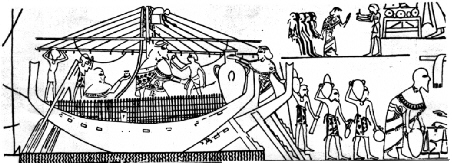
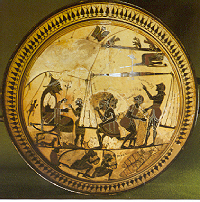
The classification of the undertakings (labors) of the mythical hero Herakles may cast light on commercial practice in Greece prior to the Classical period.* On behalf of king Eurystheos, Herakles undertook various commissions. The Greek technical term here rendered as commission isathlos(oraethlos) whose basic meaning is activity carried out for a prize. TheHomeric Hymn to Herakles(15.5f) explains further that Herakles wandered (circuited probably comes closer to the mark) doing the bidding of Eurystheos, and himself did many deeds of violence and endured many (Evelyn-White). But some manuscripts readaethleuon krataiosmighty (difficult?) commissions andexocha ergaoutstanding works. Similarly, Pausanias (3.17.3) mentions the numerous labors of Herakles and numerous good deeds he did of his own free will [ethelo_n]… (Levi). Thus, it is possible to understand thatin additionto commissions undertaken on behalf of Eurystheos and other principals, Herakles acted on his own behalf. Like the merchants of the Near East, Herakles might be both principal and agent.
3. A mountain of evidence demonstrates that the Assyrians trading in Cappadocia in the early second millennium were basically independent businesspersons, not agents of temple or palace. Thus, for example, a great merchant complains in a letter that he was losing much profit because of delays in obtaining a loan to finance an enterprise (ESoA, p. 168). At roughly thesame time the Persian Gulf trade of Sumer with Tilmun (Bahrain) was in the hands of nonroyal merchants who styled themselvesalik Tilmunor go-getters of Tilmun.
Attached as an Appendix is Judith Weingartens translation of extracts from J.-P. Olivier Des extraits de contrats de vente desclaves dans les tablettes de Knossos (1987). This important article strongly suggests the existence of formal contracts and market activity outside the palace economy.See Contracts…
(Includes an AppendixOedipus of Thebes as Coin-Loaf)
Texts from Ugarit (ca. 1400-ca. 1200), an important north Syrian port, demonstrate individual ownership of cargo ships and also show individuals, including merchants (mkrm), paying large sums of gold for trading concessions and the authority to collect harbor taxes. (In one instance the king of Ugarit declared a vessel to be exempt from duty when it arrived from Crete.) A treaty between the rulers of Ugarit and a neighboring state permitted citizens to form partnerships (tapputu) for commercial expeditions to Egypt. One text refers to an individual about to undertake a voyage to Egypt with the financial backing of four persons. Some merchants with no explicit royal connections spoke of my merchants and the merchants of my hand. (Merchants of the hand are attributed to Tyre in Ezekiel 27.15,21.)
For examples, see Bleiberg, Edward. (1994). Economic Man and the Truly Silent One: Cultural Conditioning and the Economy of Ancient Egypt.Journal of the Society for the Study of Egyptian Antiquities, 24, 4-16. The negative attitude expressed toward entrepreneurial values in the wisdom literature does not, as Bleiberg believes, demonstrate that the Egyptian economy did not know markets.
These expressions do elevate the king but, more concretely, they mean that he is gods agent. Perhaps most revealing in the agency connection is a letter of the seventh century from an official to the Assyrian king Esarhaddon: A (free) man is as the shadow of god, the slave is as the shadow of a (free) man: but the king, he is like unto the (very) image [musshulu] of god (Clines citing Pfeiffer). InMerikare, an Egyptian literary text of the 10th Dynasty, we find that: They [humans] are his [the creator gods] likenesses, who came forth from his body. I thank James P. Allen for his translation and for his information thatsnn, the word translated as likeness, basically means copy (see also Hoffmeier).
4. For the Old Babylonian period (ca. 2000-ca. 1600) there is much evidence of nonroyal commercial activity and little evidence connecting merchant (tamka_ru) with palace. One example of independent commercial activity is of special interest. In two liver omen texts one Kur, probably to be identified with Kur thetamka_rumattested in contemporary texts, makes sacrifices of lambs in order to foresee whether his affairs will prosper.Both texts refer to prospective sales in the market:ina su_qi_ i_ma_ti, literally, in the buying streets … One of these texts asks whether Kur is going to make a profit (ne_melu) on some kind of (gem?) stone, whereas the other asks the same about the sale of goods, market/trade goods,sachirtu… (Wilcke cited by Powell 1999: 11)Powell, Marvin A. (1999).Wir mssen alle Nische nutzen: Monies, Motives, and Methods in Babylonian Economics.In J.G. Dercksen (ed.)Trade and Finance in Ancient Mesopotamia. Leiden: Nederlands Historisch-Archaeologisch Instituut te Istanbul, 5-23.

Speaking of the 18th Dynasty, Helck maintains that foreign merchants, mainly from Phoenicia, werecompelledto sell their more valuable goods to state institutions (emphasis added). Of course, it is possible to visualize situations in which forced sales and monopolistic resales by the state would be a more efficient method of extracting monopoly rents than taxes alone. The problem is that the only evidence cited by Helck is a tomb-painting showing Phoenicians selling their higher valued merchandise such as slaves, Syrian bulls or metal vessels to Kenamun mayor of Thebes.Part of the tomb painting is displayed above.) This scene is simply incapable of demonstrating that foreign merchants could not sell their goods to the people of Egypt directly but had to conform to the Egyptian state economy of this period.
7. In Ostracon Wente, dated on various grounds to Ramessid times, one Menena instructs a police official named Menetjew-mes to sell the oil he had sent him in the marketplace (mereyet) (Allam). There is no indication that either individual is acting in behalf of the ruler. It would seem that Menena is a merchant. With respect to his policeman-partner, Allam notes that it is not at all uncommon for officials to have businesses on the side.
The entrepreneur is an individual who has acquired some familiarity with the preferences and economic opportunities of distant markets and has access to capital to implement his insights. Today a variety of socioeconomic roles prepare an individual to be an entrepreneur, but in antiquity the appropriate roles would have been much more limited to officials and members of the elite. The point is that given the relatively limited pool of entrepreneurial talent, a major role for palace and temple is predictable. Nevertheless, there is a significant body of evidence pointing to the existence of independent merchants, some of which is outlined below.
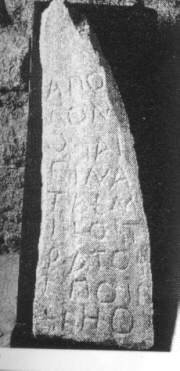
(Includes as an Appendix Judith Weingartens translation of J.-P. Olivier,Des extraits de contrats de vente desclaves dans les tablettes de Knossos)
The question has not been posed as Did the ancient Mediterranean world know private merchants? because rulers and officials who engaged in commercial activities may or may not have been public enterprisers in the sense that their enterprises with their profits belonged to the public, that is, to the nation at large. To illustrate, in about the middle of the second half of the second millennium, the ruler of Cyprus, in requesting payment for a shipment of lumber, complained to Pharaoh that the people of the land murmur against me (Liverani). Why did the people murmur? Were the murmurers, so to speak, stockholders in a royal export enterprise? Or were they independent merchants who had not received payment for their lumber and asked their king to intercede with Egypts king in their behalf? (For a preliminary discussion of public enterprise in antiquity, see ESoA, Chap. 3.)
Metope of the Cleansing of the Augean Stables from temple of Zeus at Olympia. 5th century
A clear example of this practice is found in Akkadian business documents of the early second millennium Assyrian trade in Cappadocia (see TOPIC I.A.3). Here we find the expressionsha kima(Personal Name), meaningrepresentativeof PN but literallylikenessof PN. This is of course a perfectly reasonable idiomatic usage.
Mycenaean Crete and mainland Greece, which, for good reason, have become the last stronghold of the redistributional economy and the epitome of the palace economy. With respect to the palatial economies of the mid-second millennium, it is well to note the limitations of the evidence provided by the Linear B tablets. The main archives from Knossos and Pylos cover only one year and do not cover significant sectors of the regional economy. Thus, for example, Palaima has pointed to the paucity of references to potters and he suggests that This must imply minimally that the production of ceramic pottery was not centrally controlled directly by the centralized record-keeping administration, at least not in any way comparable to those economic activities which do find their ways into specialized series of Linear B tablets. Moreover, several Linear B tablets document trade. Most importantly, one tablet from Pylos (An 35) shows a trader, nameda-ta-ra, receiving wine, wool and other goods from the palace in exchange for the imported mineral alum, used in building, leatherworking, and cloth dyeing. Thea-ta-ramay well be an independent merchant.
= 0 ) flag = true; return flag; var getMetaContent = function( metaName ) var metas = document.getElementsByTagName(meta); for (i=0; i
2. In late third millennium Sumer (Ur III) merchants (damkars) do not appear on royal ration lists and their seals do not depict royal presentations. Certainly, as the balanced account documents documents demonstrate, merchants acted as agents for the palace, but it would seem that these traders were not members of the bureaucracy or simple employees of the crown. On the other hand, there is little if any direct and unambiguous evidence of independent commercial activity. However, Neumann (1999: 53) cites a loan document from Nippur in which a merchant declares that he will repay the amount lent if he gets back from his commercial journey (kaskal). I would agree with Neumann that this promise strongly suggests both independent finance and commercial activity.Neumann, Hans. (1999). Ur-Dumuzida and Ur-DUN. In Dercksen (ed.),Trade and Finance in Ancient Mesopotamia, 43-53.
My evidence for nonroyal Hittite merchants is sparse and somewhat ambiguous. Paragraphs 5 and 6 of the Hittite Laws* require that if someone kills a traveling Hittite merchant he must pay compensation and replace the goods of the merchant. If seen in the context of similar provisions in the Laws, we have to understand that the payments are due to the merchants family or partners, not to the king. (This interpretation finds support in a letter dating to the thirteenth century from a Hittite ruler to a Babylonian ruler concerning compensation for murdered merchants.) A merchant who owns his own trade goods is to this extent independent. An edict of the Hittite king to the king of Ugarit (see below) says that citizens of Ugarit who fail to repay their debts to merchants from Ura (an important port in Cilicia) should be handed over to them (as slaves). There is no indication that the merchants of Ura are doing business in Ugarit on behalf of the Hittite king.
Why then did not the merchants come to the surface in periods of strong central government? One possibility is that royal enterprise, perhaps as a result of economies of scale and/or the favor of the gods, was much more efficient (i.e., had much lower unit costs) than independent enterprisers. I find this line of explanation extremely unlikely. The other answer is that strong central governments suppressed independent merchants with a combination of confiscatory taxation, regulation and naked force. Do we have evidence of such policies?
It is true and unsurprising that officials of palace and temple [and aristocrats e.g., Charaxos of Lesbos, Sostratos of Aigina, Phobos of Phocaia, and Solon (?)] played major roles in the commercial life of the Mediterranean world. In practice, the
Herakles. Detail from amphora c. 485 BCE
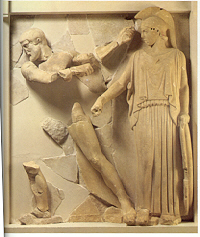
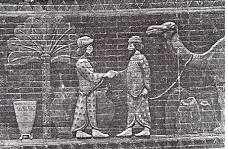
It will be objected that the above evidence does not conclusively demonstrate the existence of independent merchants in Egypt. Probably not. May we hope for a text which states that an individual was a merchant who was NOT employed by palace (or temple) and shows that he operated on a large scale?
A less intellectually self-serving line of objection is that the examples cited come from periods of weak central government, when reality did not fit the model of royal domination of resource allocation. This line of argument deserves analysis. The emergence of independent merchants in periods of weak central government shows that the necessary commercial mindset and entrepreneurial talent lurked just below the surface of Egyptian society. The prevalence of the commercial mindset is strongly hinted in the Egyptian wisdom literature of the Middle Kingdom and New Kingdom by repeated condemnations of and warnings against the desire to acquire wealth and expressions of individual initiative.
TOPIC IV:Egypts Acquisition of Foreign Goods (and Labor Power) Mainly in the Old Kingdom: Trade Versus Plunder(Revised September 25, 2002)
5. In the mid-second millennium at Nuzi in eastern Assyriatamka_ruappear on royal ration lists, but nonroyal individuals also employed their services. Some Nuzi texts show merchants borrowing from independent lenders for business ventures. A lawsuit concerning a merchant who disregarded a royal proclamation fixing a maximum price on slaves also attests to self-employed merchants.
The page was last revised on November 4, 2008.
In progress: Some notes concerning the ashera.Last revised May 9, 2003:Did the Ancient Mediterranean World Know Nonroyal Merchants?
At Ebla in northern Syria in the mid-third millennium, according to Pettinato, thelu-karman of the commercial center is an independent businessman and thekasorlu-kasmessenger is a royal merchant.
This page edited by a professional economist, Morris Silver, is devoted to the consideration of unsettled or disputed aspects of ancient economies, including the entire Mediterranean world. It builds on my booksEconomic Structures of Antiquity(ESoA) (1995) Greenwood Press, Westport, Connecticut, andTaking Ancient Mythology Economically(TAME) (1992), E.J. Brill, Leiden. The page also incorporates my own more recent research as well as contributions submitted for the page by interested scholars.
By far the most commercially revealing of those activities Herakles carried out on his own behalf took place during his commission to remove the dung from the cattleyard of Augeios, ruler of Elis. A legal dispute arose because Herakles, despite his status as Eurytheos agent, made a side-deal with Augeios for a tenth
*For a recent translation of the Hittite Laws, see Harry Angier Hoffman (1997).The Laws of the Hittites: A Critical Edition. Leiden:Brill.
Interestingly, we do seem to have an example of the central government seeking to suppress market behavior by its own officials! In the Nauri decree, Seti I (1306-1290) forbids officials from seizing for corve the personnel of the Osiris temple in Nubia. But he also forbids them fromhiring-awaythe temples employees. The phrase used in the decree ism brtby agreement/contract, which Kitchen relates to West Semiticberitcontract/covenant.
For an extended analysis of the commercial aspects of Herakles career, see Silver, TAME, Chap. 5.
Review of James P. Allen,The Heqanakht Papyri(2004) [Published by(2004)]
2. In extolling the life of the scribe, Papyrus Lansing (4.8-10), a text dated to 1350-1200, recounts that the merchants [shewtyew] fare downstream and upstream and are as busy as copper [see TOPIC III.4], carrying wares (from) one town to another and supplying him who has not, although the tax-people carry (exact?) gold, the most precious of all minerals (Blackman and Peet; Caminos; Castle).[Menu has recently relatedshewetytoshewetand translates it literally as the one of the lack.]There is no indication whatever that the busyshewtyeware royal merchants. Moreover, if the merchants were subject to the tax-collector it is hardly possible that they were royal employees. Of course, the text does not specify that the gold carried by the tax-collectors was exacted from theshewtyew. But what then, in a composition dedicated to the advantages of the scribal profession, would be the point of the contrast between merchants and tax-collectors, and from whom did the tax-people obtain the gold?
Half an anchor from Gravisca dated to the end of the 6th century. The dedication is from Sostratos to Apollo. This Sostratos is probably to be identified with Sostratos son of Laodamas whose fabulous profits from trade are mentioned by Herodotus (4.152.3).
: Business Agent asImage–Examples and Broader Implications
TOPIC VI: Land Markets in the Ancient Near East: A Critique of the Primitivist Perspective(Revised October 30, 2004)
Then again, the entire argument is very far from being conclusive. It may turn out that most of the evidence for independent merchants cannot be demonstrated to come from periods of weak central rule. To determine this we need to date the evidence and lay it against the strength of central government. But how precisely can Egyptologists date literary texts such as Papyrus Lansing and Papyrus Anastasi IV? Further, care must be taken in identifying periods of royal weakness. For example, in the late Ramessid era the central government was apparently in disarray, but this would not seem to apply to the era of affluence culminating in the reign of Ramesess III in the later twelfth century.
1. Sarna notes the use of image in regal vocabulary which serves to elevate the king over the ordinary run of men and he cites several examples:In Mesopotamia we find the following salutations: The father of my lord the king is the very image of [the god] Bel (salam bel) and the king, my lord, is the very image of Bel; The king, lord of the lands, is the image of [the god] Shamash. Egypt the same concept is expressed through the name Tutankhamen (Tut-ankh-amun), which means the living image of (the god) Amun, and in the designation of Thutmose IV as the likeness of Re.Examples from Egypt might easily be multiplied, but one instance is especially supportive of theagent as image hypothesis:Ramesses II is called the image (twt) of the sun gods right eye(Hornung cited by Curtis). Obviously the intention is not to suggest that the king bears a physical resemblance to the eye of the god.
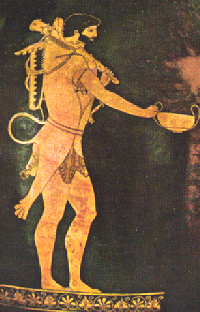
of the cattle. When Augeios learned of Heraklesathlosfor Eurystheos, he refused to pay the contracted-for tenth. For his part, Eurystheos refused to credit Herakles with a fulfilled commission because his activity had been performed for hire (Ap. 2.5.5). The details of the dispute, as we have them from Apollodorus, are at once trivial and obscure. Light seems to be cast on the point of the matter by Babylonian long-distance trading contracts of the seventh-sixth centuries wherein the principal stipulates how much of his capital his agent might employ for traveling expenses and, more significantly, prohibits the agent from doing business on the side. The myth suggests that similar contracts were employed in Greece and that Herakles, as Eurystheos agent, had violated the no-side-business provision.
TOPIC II:Business Agent as Image: Example and Broader Implications(Revised December 19, 2004)